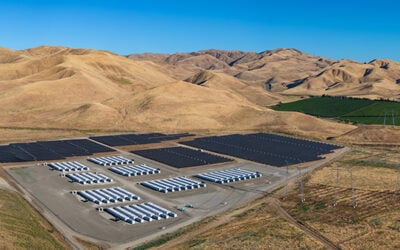
Projects that demonstrate how energy storage can benefit a wide range of stakeholders and the electric grid can compete for US$15.5 million of funding from the New York State Energy Research and Development Authority (NYSERDA).
The money will come from the Clean Energy Fund, a 10-year, US$5.3 billion component of New York’s epic Reforming the Energy Vision (NY REV) undertaking to modernise the grid. NY REV was launched in 2014 by state governor Andrew Cuomo.
NY REV is nothing short of an attempt to reconfigure energy networks and “fundamentally transform the way electricity is distributed and used” in the state, supporting New York’s 60% renewables by 2030 target and making huge savings where possible on infrastructure costs with energy storage and other advanced technologies.
The latest funding, announced yesterday, will be given out on a competitive basis to an unspecified number of projects. It is earmarked for energy storage installations that can help integrate renewables, ease the demand seen during peak times and ultimately save ratepayers money.
Try Premium for just $1
- Full premium access for the first month at only $1
- Converts to an annual rate after 30 days unless cancelled
- Cancel anytime during the trial period
Premium Benefits
- Expert industry analysis and interviews
- Digital access to PV Tech Power journal
- Exclusive event discounts
Or get the full Premium subscription right away
Or continue reading this article for free
NYSERDA said that while energy storage has obvious benefits and price declines continue to improve its cost-effectiveness, the versatile nature of the technology that made it potentially useful to a number of different stakeholders also meant it was difficult to unite the differing aims and make suitable financing arrangements.
Multiple stakeholder benefits are a complex proposition
The agency is looking for projects that therefore demonstrate the multiple-stakeholder benefits of energy storage, by combining use cases and revenue streams for stakeholders that include electric utility customers, utilities themselves, energy storage vendors and developers. The funding programme rolls on for nearly three years, until March 2020, or until budgeted funds are exhausted.
NYSERDA is soliciting concept papers for projects that utilise commercially available technologies and could be replicated across New York State. They must also show how they will support New York’s emissions reduction and renewable energy goals. Developers of selected projects will be invited to submit proposals for feasibility studies or even full demonstration projects and if successful will receive the funds to complete these studies and demonstrations.
NYSERDA has invested in 50 energy storage tech development projects to date and aims to reduce soft costs in distributed energy storage by 33% within five years. New York is also home to NY BEST (New York Battery and Energy Storage Technology Consortium), part-R&D development group and part-trade association.
“The funding announced today will advance energy storage demonstration projects to quantify the broad benefits and wide range of services provided by storage and, in the process, support the widescale deployment of energy storage in New York,” NY BEST executive director William Acker said.
“Energy storage technologies can provide multiple benefits to the electric grid and customers alike, such as peak load reduction, capacity, integration of renewable energy and resilience.”
While the US’ new president seems intent on rolling back years of progress on fighting climate change, locally the picture seems different. State-level politicians in various regions of the US have reiterated their commitments to continue decarbonising and modernising energy systems in spite of President Trump’s apparent scepticism on the matter.
“Under Governor Cuomo’s leadership, the state is leading in the development and use of clean energy technologies, including storage,” NYSERDA president and CEO John B Rhodes said.
“We are now seeking the next wave of innovation to bring to customers the benefits of energy storage, and to make energy use more efficient and the environment cleaner for all New Yorkers.”
Intelligent energy storage maker for the commercial and industrial (C&I) segment, Stem, responded positively to news of the NYSERDA funding and the state’s wider aims and initiatives.
“Innovative statewide programs like the NYSERDA Clean Energy Fund illustrate how stand-alone energy storage as well as energy storage paired with other distributed energy resources can deliver multiple value streams to varied stakeholder groups…” Stem CEO John Carrington said in a statement emailed to Energy-Storage.News.
“Driven by grid congestion challenges and a goal to decarbonise regional electricity systems while encouraging customer participation, the New York market is ripe for energy storage growth.”





